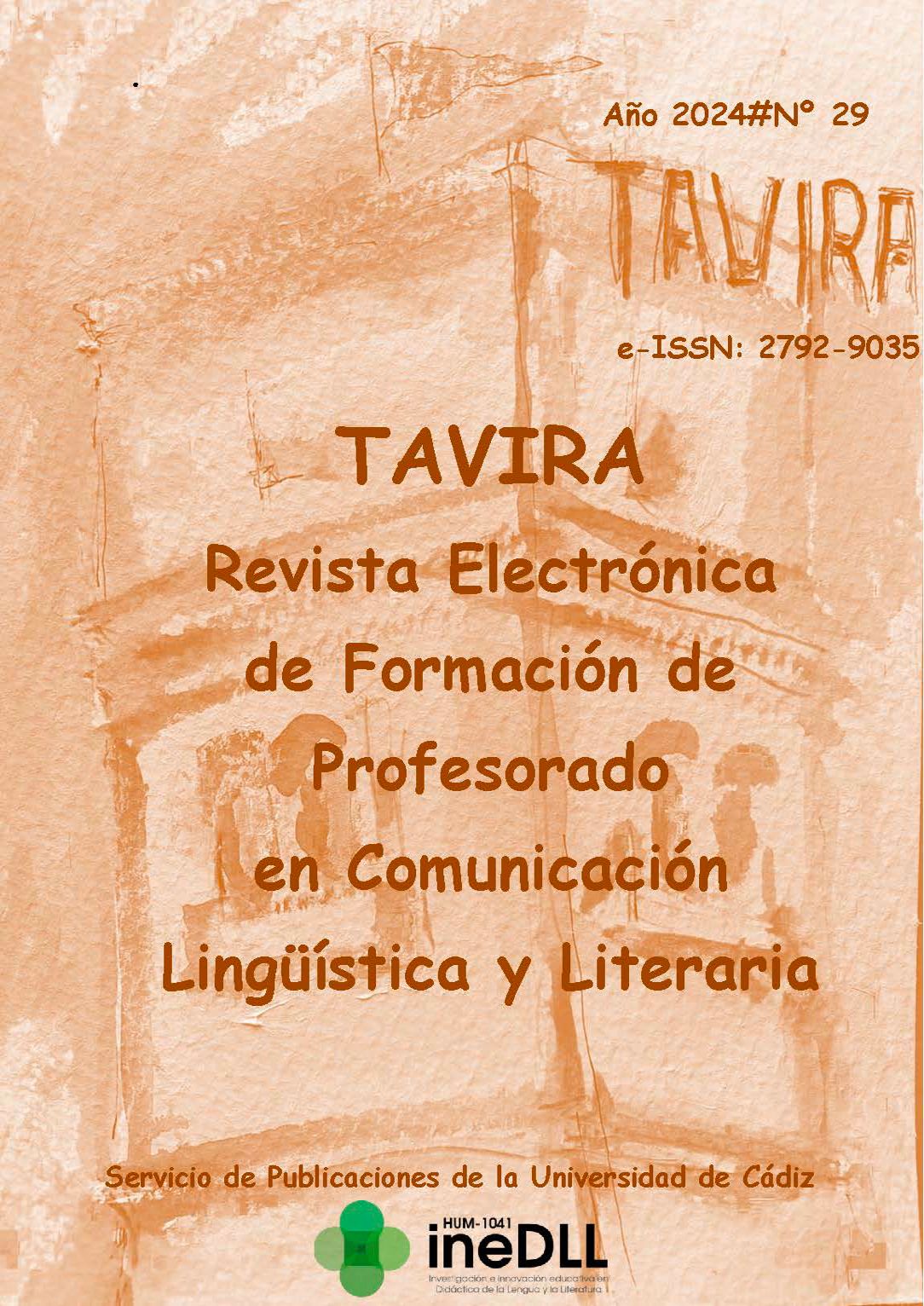Promotion of reading through non-fiction illustrated books and thinking routines

Downloads
- PDF (Español (España)) 189
- EPUB (Español (España)) 60
- VISOR (Español (España))
- MÓVIL (Español (España))
- XML (Español (España)) 17
DOI
https://doi.org/10.25267/Tavira.2024.i29.1202Info
Abstract
The research aimed to identify strategies to promote reading engagement in a summer library located in an informal setting in the province of Segovia. Employing a qualitative action research approach during the months of July and August, the responsible teacher developed a continuously evolving didactic proposal. Data were collected through participant observation and interviews and analyzed using categorization and criteria of scientific rigor. The proposal integrated illustrated non-fiction books with thinking routines, fostering reading habits and critical comprehension. Adaptability to the context and cycles of reflection-action were crucial aspects for the study's success. The results support the effectiveness of the proposal in promoting reading during the summer in a library. In conclusion, the thinking-based learning (TBL) methodology proved to be an effective tool for achieving the research objective and promoting reading engagement in this environment.Keywords
Downloads
How to Cite
License
Copyright (c) 2024 Sandra San Miguel Prieto

This work is licensed under a Creative Commons Attribution-NonCommercial-NoDerivatives 4.0 International License.
Authors who have publications with this journal agree to the following terms:
- They will retain their copyright and grant the journal the right of first publication of their work, which will simultaneously be subject to the Creative Commons Attribution License. They may copy, use, disseminate, transmit, and publicly display, provided that authorship, url, and journal are cited, and they are not used for commercial purposes. Derivative works are not permitted.
You may adopt other non-exclusive licensing arrangements for distribution of the published version of the work (e.g. deposit it in an institutional telematic archive or publish it in a monographic volume) as long as the initial publication in this journal is indicated.
Disseminate your work on the Internet (e.g. in institutional telematic archives or on your website), which can lead to interesting exchanges and increase citations of the published work. (See The Open Access Effect)
References
Álvarez-Ramos, E., y Romero-Oliva, M. F. (2024). Semiótica de microtextos multimodales: De los libros informacionales al conocimiento en red. Signa: Revista de la Asociación Española de Semiótica, (33), 131-155. https://doi.org/10.5944/signa.vol33.2024.38817
Baró, M. (2013). Més oportunitats per a la lectura: els llibres de coneixements a l’escola. En Baró, M., Aliagas, C. y Gorchs, G. (Eds.), Com crear un ambient lector a l’ escola? (pp. 12-34). Fundació Bofill.
Baró, M. (2022). Los libros informativos, imprescindibles en la biblioteca escolar. MÉI: Métodos de Información, 13(24), 67-90. https://doi.org/10.5557/IIMEI13-N24-067090
Benito, L. y Pinedo, R. (2021). Trabajar el pensamiento en educación primaria a través de rutinas y metodologías activas. En Romero-García, C. (Coord.), Innovaciones metodológicas con TIC en educación (114-138). Dykinson.
Chiliquinga-Campos, F., y Balladares-Burgos, J. (2019). Rutinas de pensamiento: Un proceso innovador en la enseñanza de la matemática. Revista Andina de Educación, 3(1), 53-63. https://doi.org/10.32719/26312816.2020.3.1.9
García-Lartitegui, A. (2018). Alfabeto del libro de conocimientos: paradigmas de una nueva era. Pantalia publicaciones.
Garralón, A. (2013). Leer y saber: los libros informativos para niños. Tarambana.
Garralón, A. (2005). Usos del libro informativo: resultados de una (pequeñísima) encuesta. Educación y biblioteca, 17(147), 86-88. http://hdl.handle.net/10366/119177
Guba, E. G., y Lincoln, Y. S. (1981). Effective evaluation: Improving the usefulness of evaluation results through responsive and naturalistic approaches. Jossey-Bass.
Lam, R., y Manefield, J. (2015). Creating cultures of thinking. FYI: the Journal for the School Information Professional, 19(4), 6-9. https://search.informit.org/doi/10.3316/aeipt.210346
Latorre, A., y González, R. (1987). El maestro investigador: la investigación en el aula. Graó.
Mena-Bernal, I. (2016). Álbum ilustrado y trabajo cooperativo: las percepciones en educación infantil. EA, Escuela abierta: revista de Investigación Educativa, (19), 159-176. https://doi.org/10.29257/EA19.2016.08
Op de Beeck, N. (2017). Picture-text relationships in picturebooks. En Kümmerling-Meibauer, B. (Ed.). The Routledge Companion to picturebooks (pp. 19-27). Routdledge.
Orozco, M. T. (2009). El libro álbum. In Sincronía. (Issue 52). Centro Universitario de las Ciencias Sociales y Humanidades (CUCSH) de la Universidad de Guadalajara.
Restrepo, B. (2003). Aportes de la investigación-acción educativa a la hipótesis del maestro investigador: evidencias y obstáculos. Educación y educadores, (6), 91-104. https://doi.org/10.17227/01212494.18pys65.69
Ritchhart, R., Church, M., y Morrison, K. (2011). Making thinking visible: How to promote engagement, understanding, and independence for all learners. John Wiley & Sons.
Ritchhart, R., y Perkins, D. (2008). Making thinking visible. Educacional leadership, 65(5), 57-61. https://acortar.link/dz8vvD
Romero-Claudio, C., Romero-Oliva M. F., y Heredia-Ponce, H. (2022). Los libros de no ficción y el booktrailer para el desarrollo de la competencia lectoliteraria desde la formación inicial del maestro. En Asiáin-Ansorena, A., y López-Pérez, M. V. (Eds.), Multimodalidad y didáctica de las literaturas (pp. 253-269). Graó.
San Martín, D. (2014). Teoría fundamentada y Atlas. ti: recursos metodológicos para la investigación educativa. Revista electrónica de investigación educativa, 16(1), 104-122.
Stake, R. E. (2020). Investigación con estudio de casos. Ediciones Morata.
Swartz, R. J., Reagan, R., Costa, A. L., Beyer, B. K., y Kallick, B. (2014). El aprendizaje basado en el pensamiento (Vol. 4). Ediciones SM España.
Tabernero, R. T., y Laliena, D. (2023). El libro ilustrado de no ficción en la formación de lectores: análisis de las claves discursivas y culturales para leer en la sociedad digital. Texto Livre, 16, 1-13. https://doi.org/10.1590/1983-3652.2023.41926
Tabernero, R., y Colón, M. J. (2023). Leer para pensar. El libro ilustrado de no ficción en el desarrollo del pensamiento crítico. Revista de Educación a Distancia (RED), 23(75), 1-26. http://doi.org/10.6018/red.545111
Young, T. A., Moss, B., y Cornwell, L. (2007). The classroom library: A place for nonfiction, nonfiction in its place. Reading horizons: A journal of literacy and language arts, 48(1), 1-18.






